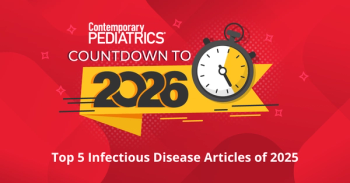
Typical RSV vaccine uptake could lead to fewer pediatric ICU encounters
"The novel RSV prevention strategies may reduce ICU morbidity and mortality for children," the study authors concluded.
Background
A recently-published, retrospective study suggested that
The study, published in JAMA Network Open, noted that these preventive measures were implemented in 2023. "Bronchiolitis is the most common diagnosis necessitating respiratory support and pediatric intensive care, and RSV is the most common cause of bronchiolitis," wrote the study investigators, led by Alice Shanklin, MD, of the Division of Pediatric Critical Care Medicine, Children’s National Hospital, Washington, DC; Now with Division of Pediatric Critical Care Medicine, Cohen Children’s Medical Center, New York, New York.1
"We conducted a retrospective analysis of a national multicenter database to determine the proportion of pediatric ICU encounters with RSV infection and the proportion of ICU encounters with RSV infection eligible for RSV prevention," wrote Shanklin and colleagues. "We also explored the differences in clinical variables and markers of illness severity between these groups."1
Study details and results
In the study, the investigators examined pediatric ICU encounters in the United States with and without RSV from January 1, 2017, to June 1, 2023, using the national electronic health record database, Oracle Cerner RealWorld data.1
All children, who were aged older than 1 day to younger than 18 years and admitted to an ICU amid the study period were included in the analysis, which was performed from February to May 2024.1
Of the 13,702 ICU encounters with RSV (11.4% of total ICU encounters), 38.6% were eligible for prevention. "Encounters with RSV accounted for 21.1% (109 334) of ICU days, of which 43.8% (47 888) were eligible for prevention (9.2% of total ICU days)," stated the study authors.1
RSV encounters were associated with a greater use of positive pressure ventilation (4074 [29.7%] vs 18 821 [17.7%]; P < .001) and vasoactive medications (3057 [22.3%] vs 18 570 [17.5%]; P < .001) compared with those without RSV, according to study results.1
Regarding prevalence and resource utilization associated with RSV infection, the respiratory disease was associated with a greater illness severity. This included following compared to encounters without RSV, according to study results:
- Longer median ICU length of stay (2.8 [1.5-6.2] vs 1.7 [0.9-3.7] days; P < .001)
- Median (IQR) hospital length of stay (5.5 [3.0-11.9] vs 3.5 [2.0-7.0] days; P < .001)
- Higher proportion of respiratory failure (9723 [70.9%] vs 34 477 [30.5%]; P < .001)
- Positive pressure ventilation (4074 [29.7%] vs 18 821 [17.7%]; P < .001)
- Vasoactive medication (3057 [22.3%] vs 18 570 [17.5%]; P < .001)
- ECMO (124 [0.9%] vs 263 [0.3%]; P < .001)
- Death (735 [5.3%] vs 5119 [4.8%]; P = .006)
"Encounters with RSV infections accounted for 21.1% of ICU days, of which 43.8% were eligible for RSV prevention," wrote the authors. "Therefore, 4.4% of ICU encounters and 9.2% of ICU days represent encounters that have RSV and are eligible for RSV prevention." Among patients aged 0 to 2 years, RSV infection accounted for 10.9% of ICU days and 72.3% were eligible for RSV prevention.1
RSV was associated with decreased mortality in the age group of 0 to 2 years (251 [3.5%] vs 1461 [4.2%]; P = .005), not associated with mortality in the aged group of 2 to 5 years (149 [5.8%] vs 917 [5.2%]; P = .21), and associated with increased mortality in the age group of 5 years and older (335 [8.7%] vs 2741 [5.1%]; P < .001).1
Conclusion
The cross-sectional study led authors to suggest that a 2.1% to 2.8% reduction in ICU encounters and a 4.5% to 5.9% reduction in ICU days could be observed if a 65% to 85% uptake in novel RSV prevention strategies is achieved for eligible children. This could also lead to an estimated 3.6% to 4.7% reduction during the North American RSV peak in December and January.1
"The novel RSV prevention strategies may reduce ICU morbidity and mortality for children," the study authors concluded. "The results suggest that efforts to increase availability and acceptance of these therapies are warranted. Further expansion of the population eligible for RSV prevention could have a substantial impact."
References:
1. Shanklin A, Olson T, Patel AK, Trujillo Rivera EA, Pollack MM. Respiratory Syncytial Virus and US Pediatric Intensive Care Utilization. JAMA Netw Open. 2024;7(10):e2440997. doi:10.1001/jamanetworkopen.2024.40997
2. Fitch, J. The evolution of RSV disease prevention in infants. Contemporary Pediatrics. October 22, 2024. Accessed October 28, 2024. https://www.contemporarypediatrics.com/view/the-evolution-of-rsv-disease-prevention-in-infants
Newsletter
Access practical, evidence-based guidance to support better care for our youngest patients. Join our email list for the latest clinical updates.




